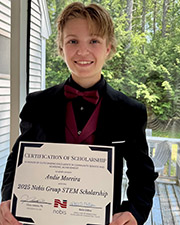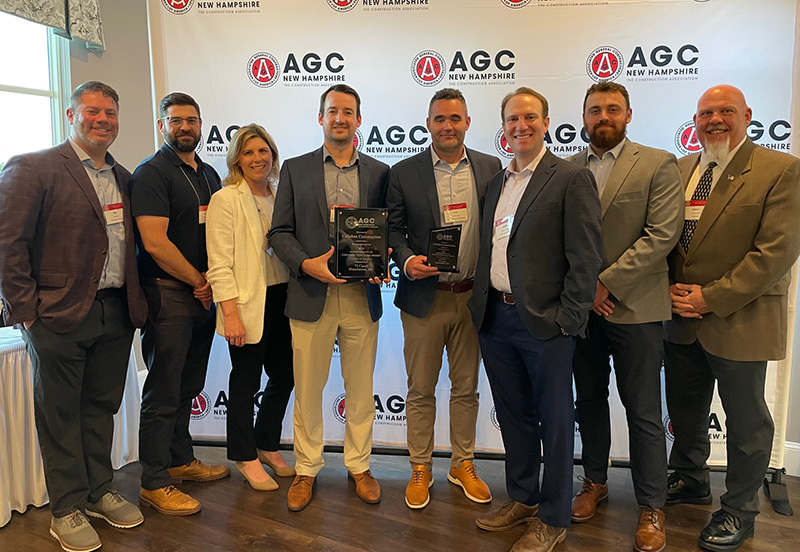News: Construction Design & Engineering
Posted: January 16, 2008
Infrared thermography testing resolves post-construction inspection disputes
Do you have a new building that is not performing as expected? Do you suspect that design flaws or construction defects may be to blame?
Or are you a general contractor trying to determine what went wrong on a job, and who should be held accountable for the results?
Perhaps are you an architect, and drafts and condensation problems are plaguing your client's new office building.
Wherever you stand in the complex and expensive world of building construction and renovation, you know that when things go wrong, disputes are sure to follow. And those disputes can become ugly and protracted - not to mention litigious and expensive - unless you can get objective, authoritative information to end the finger-pointing and guide the parties toward a quick, fair, and cost-effective solution.
That's why more and more consultants, architects, contractors, and building owners are specifying post-construction inspections with infrared thermography. They recognize the need for unbiased and accurate testing to evaluate the performance of design, materials, and workmanship. Infrared building envelope inspections can detect hidden structural problems and poor construction practices, as well as existing and potential sources of air leakage and water infiltration. Professional infrared surveys can even verify the proper installation of insulating materials in recently constructed buildings.
The Canadian government recently studied the best way to address "thermal comfort problems" in office buildings. Their research concluded that "detection, verification, remediation and commissioning of solutions are easily and effectively carried out with the assistance of infrared radiometers and proper inspection and analysis procedures....Infrared thermography was...an effective and nondestructive means of not only measuring relevant surface temperatures during times when problems were present, but it also provided project managers and occupants with visual proof of the magnitude of the problem." (1)
Sometimes post-construction infrared testing reveals a number of separate defects that interact to create significant problems within the facility. In one such case, our certified thermographers performed a quality control inspection of new construction at a university. Infrared analysis detected substantial amounts of cold air infiltrating through inadequate air and vapor barriers, cold air leaking through newly installed windows, and nearly fifty other significant problems related to the building envelope's performance.
Several years ago, erratic humidity levels in a newly constructed museum forced facility engineers to delay moving art pieces into the new building. Our infrared testing revealed that large quantities of air were leaking into and out of the building, which prevented the air handling system from maintaining the desired humidity level. Armed with our detailed information about the locations of the air leakage, the contractor was able to repair the problem areas. The building's HVAC system was then able to control the air exchange rate and maintain proper humidity.
Recently we were called in to survey a new elementary school in which the sprinkler system was repeatedly freezing up. The burst sprinkler pipes were causing significant damage to the ceiling tiles and carpets, and on several occasions school days had to be canceled. Thermographic inspection pinpointed several areas where cold exterior air was penetrating the building envelope and drastically lowering temperatures in the conditioned spaces that housed the sprinkler system. The infrared survey documentation made it possible to devise practical and cost-effective retrofits to eliminate the freeze-ups.
When the decision is made to conduct a post-construction infrared inspection, it's a good idea to have all interested parties on site during the testing. Once the causes of the problems are isolated and objectively documented for all to see, the parties responsible for the detected problems are much more likely to abandon rhetoric and accept their responsibilities. In many cases, previously warring parties end up working cooperatively to come up with practical and cost-effective solutions.
1. The use of infrared thermography in detection, remediation and commissioning of thermal comfort problems in office buildings, Antonio Colantonio, Public Works and Government Services Canada, Technology Directorate, ftp://ftp.tech-env.com/pub/THERMAG/thermal_comfort-e.pdf
Peter Brooks is founder and president of Infra-red Analyzers, Inc., Williston, VT
MORE FROM Construction Design & Engineering
Nobis Group awards Robinson and Moreira STEM scholarships
Concord, NH Nobis Group, a 100% employee-owned consulting firm specializing in engineering and environmental solutions across the Northeast, has named the recipients of its 2025 STEM Scholarship: Andie Moreira of

Quick Hits
Columns and Thought Leadership

The rise of incubators and co-working spaces: The latest in life sciences - by Matt Combs
In recent years, the life science industry has witnessed a shift in how companies operate and innovate. One of the key driving forces behind this transformation is the emergence of incubators and co-working spaces specifically tailored to meet the unique budget and schedule needs of startups.

The design-build advantage: Integrated interior design solutions - by Parker Snyder
When it comes to corporate interior spaces for both commercial and industrial projects, partnering with a design-build firm with in-house interior design services can offer clients many benefits. Unlike traditional delivery methods where interior designers operate independently from the design and construction teams, often creating a longer project timeline as cost negotiations and revisions ensue

Careers in Construction Month focus on training and safety - by Joe Camilo
October is Careers in Construction Month, and rarely has it been more consequential. According to our chapter’s national parent organization, the construction industry needs to attract half-a-million new workers in the coming year to meet demand. Addressing that need is a huge job, but we at ABC MA are trying to do our part.

Ask the Electrician: Is summer a prime time for commercial electrical maintenance?
The answer is “Yes!” While January marks the official new year, many businesses view September as a fresh start. This makes summer an ideal time for commercial property owners to schedule long-term electrical maintenance projects.







